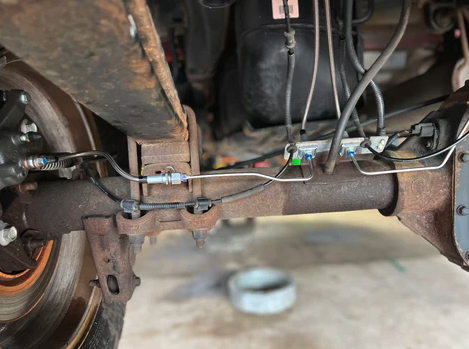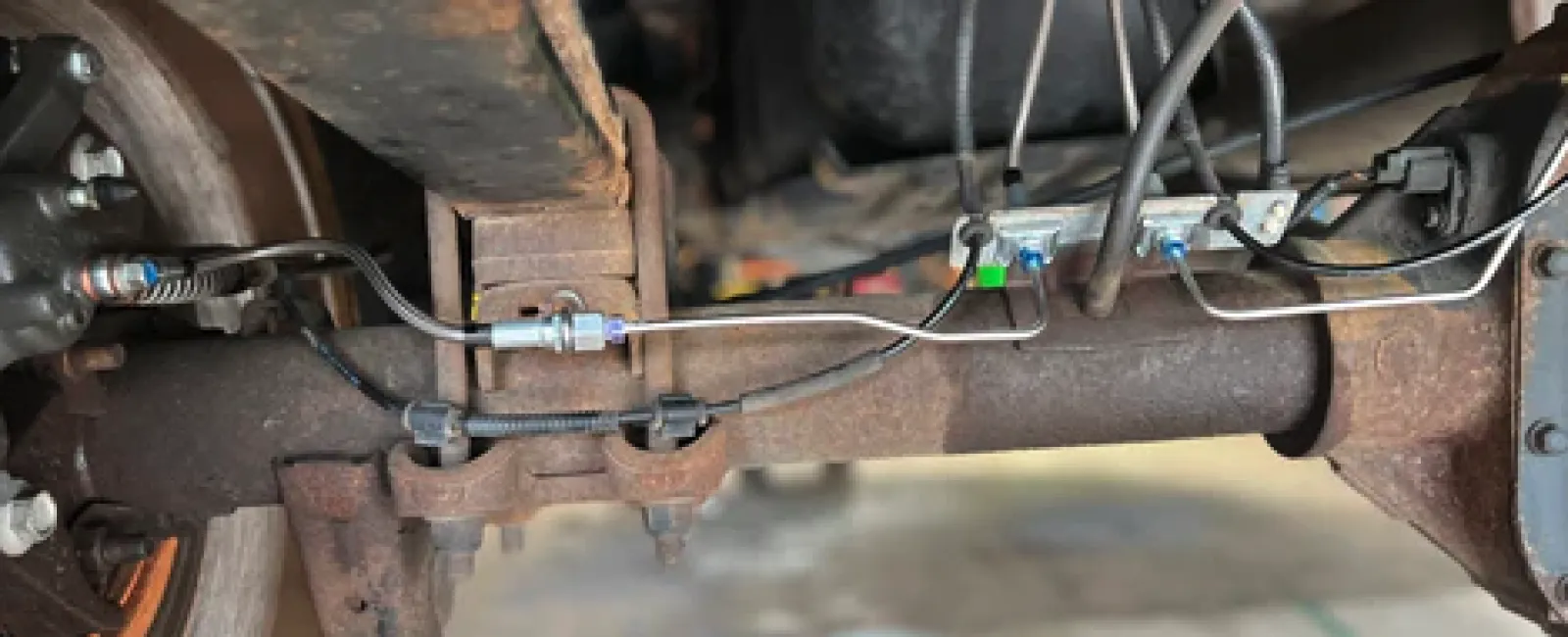When it comes to vehicle maintenance, most people focus on the routine stuff like oil changes and tires. However, one crucial component often overlooked is the brake lines—the lifeline of your vehicle's braking system. If these lines fail due to rust and corrosion, which we unfortunately see happen often, your braking power could be severely compromised, leading to dangerous situations on the road.
What Are Brake Lines?
Brake lines are typically metal tubes but sometimes reinforced rubber hoses that carry brake fluid from the master cylinder to the brakes at each wheel. When you press the brake pedal, fluid is forced through these lines, creating hydraulic pressure that applies the brake pads onto the metal rotors, which help your wheels slow down and stop.
Most brake lines are made of steel, while some modern vehicles use coated or stainless steel lines for added corrosion resistance. Despite this, they are still susceptible to rust over time—especially in regions where road salt, moisture, and harsh weather conditions accelerate corrosion.

Why Do Brake Lines Rust?
Rust forms when metal is exposed to oxygen and moisture. Brake lines, typically located on the undercarriage of a vehicle, are constantly exposed to water, snow, slush, road salt, and other corrosive elements.
Here are some common causes of brake line rust:
- Road Salt: Salt used for de-icing in winter speeds up corrosion.
- Moisture & Humidity: Water trapped under the vehicle can cling to metal surfaces, leading to oxidation.
- Dirt & Debris: Grime buildup can hold moisture against brake lines, worsening the rusting process.
- Age & Wear: Over time, the factory coatings on brake lines wear down, leaving them vulnerable to rust.
If left unchecked, rust can eat through brake lines, leading to leaks. A leaking brake line reduces hydraulic pressure, potentially causing brake failure.
How Lanolin Undercoating Protects Brake Lines from Rust
One of the best ways to prevent brake line rust is by applying a lanolin-based undercoating. Lanolin, derived from sheep's wool, is a natural, non-toxic rust inhibitor that forms a protective barrier over metal surfaces.
Here's how lanolin undercoating helps:
- Seals Out Moisture: It repels water, preventing rust from forming on brake lines.
- Adheres to Metal: Unlike some oil-based coatings that wash away, lanolin is very thick and stays in place, even in harsh conditions. It sticks on metal surfaces like a thick mucus.
- Creeps into Hard-to-Reach Areas: Lanolin spreads into seams and crevices, providing full coverage and protection.
- Environmentally Friendly: It's a safer alternative to petroleum-based coatings, making it a great choice for long-term vehicle protection.
Protect Your Brake Lines Before It's Too Late
Rusty brake lines are a serious safety hazard that can lead to expensive repairs—or worse, brake failure. Investing in lanolin undercoating is a simple yet effective way to extend the life of your vehicle's brake lines and undercarriage.
If you drive in an area with harsh winters or high humidity, consider scheduling a lanolin undercoating treatment today. A little prevention now can save you from costly and dangerous issues down the road.
